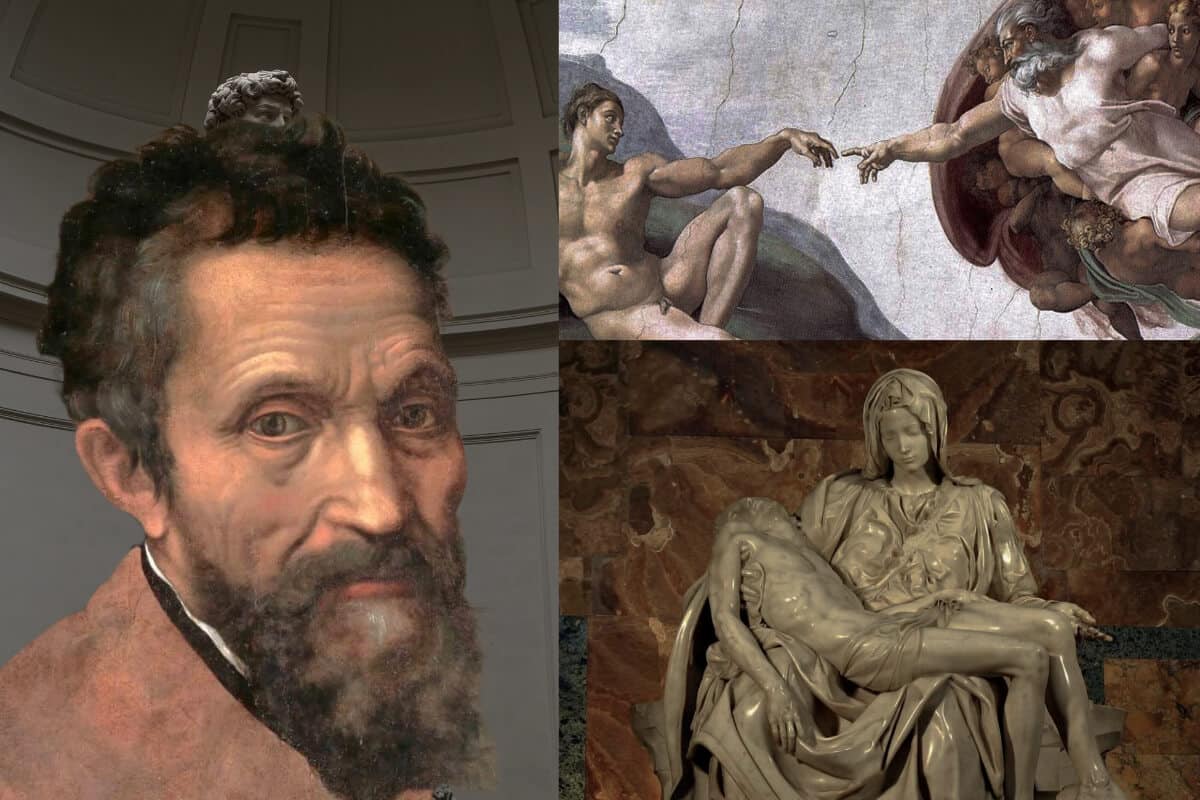Michelangelo Buonarroti stands as a pillar of the Renaissance, an era that reshaped art and culture with its vibrant embrace of human potential and creativity. His life, marked by early challenges and unparalleled dedication, offers a compelling narrative on the power of art to reflect and transcend human experience.
This exploration into Michelangelo’s world promises insights into how his upbringing, innovations, and masterful creations defined his legacy and influenced the course of art history.
Table of Contents
Early Life and Education
Michelangelo Buonarroti, a name synonymous with the Renaissance art movement, had an upbringing that was anything but ordinary and played a crucial role in shaping his artistic journey. Born in 1475 in the small town of Caprese, Italy, Michelangelo’s early life was steeped in the richness of the Italian Renaissance, a period buzzing with artistic and cultural rebirth. So, how exactly did his early years influence the masterpieces he created? Let’s dive in.
From a young age, Michelangelo was set on a path different from his peers. His mother passed away when he was just six, and his father, recognizing the boy’s lack of interest in the family’s banking business, agreed to apprentice him at the tender age of 13 to the painter Domenico Ghirlandaio. This apprenticeship was pivotal, introducing young Michelangelo to the art world, albeit initially in painting.
But here’s where it gets interesting. While Michelangelo learned the basics of painting, his exposure to the human form truly ignited his passion. This was thanks to his time spent at the Medici Gardens, where he had the chance to study under the wing of Bertoldo di Giovanni, a renowned sculptor and student of the great Donatello.
Here, Michelangelo was surrounded by ancient Greek and Roman sculptures, soaking in the beauty of classical art. His love for sculpting was born in these gardens, setting him on the trajectory to become one of the most famous sculptors in history.
Michelangelo’s connection to the influential Medici family also significantly influenced his development. Lorenzo de’ Medici, the de facto ruler of the Florentine Republic and a great patron of the arts, took Michelangelo into his household.
This exposed the young artist to the intellectual circles of Florence, where philosophers, poets, and artists gathered. This exposure enriched Michelangelo’s intellectual base and provided him with powerful connections that would serve him throughout his career.
What’s remarkable is how Michelangelo’s early experiences translated into his art. His sculptures, like the iconic David and the Pietà, showcase a profound understanding of the human body, a fascination rooted in his early studies.
His work on the Sistine Chapel’s ceiling, which spanned four painstaking years, reflects not only his mastery of the human form but also a deep engagement with themes of creation, judgment, and the beauty of the divine, undoubtedly influenced by the philosophical discussions he participated in in the Medici household.
Moreover, Michelangelo’s upbringing instilled in him a relentless work ethic and pursuit of artistic perfection. His father’s early insistence on a formal apprenticeship and subsequent studies under the watchful eyes of Florence’s art masters honed his skills to an unprecedented level. Michelangelo himself was known to say, “If people knew how hard I had to work to gain my mastery, it would not seem so wonderful at all.”
In wrapping up, Michelangelo’s upbringing was instrumental in molding him into the artist celebrated today. His early exposure to painting, his transformative dive into sculpting at the Medici Gardens, and his intellectual growth within Florence’s vibrant circles each shaped his artistry.
Michelangelo’s legacy, marked by his unparalleled contributions to the Renaissance, is a testament to how his early life experiences fueled his lifelong dedication to pushing the boundaries of art.
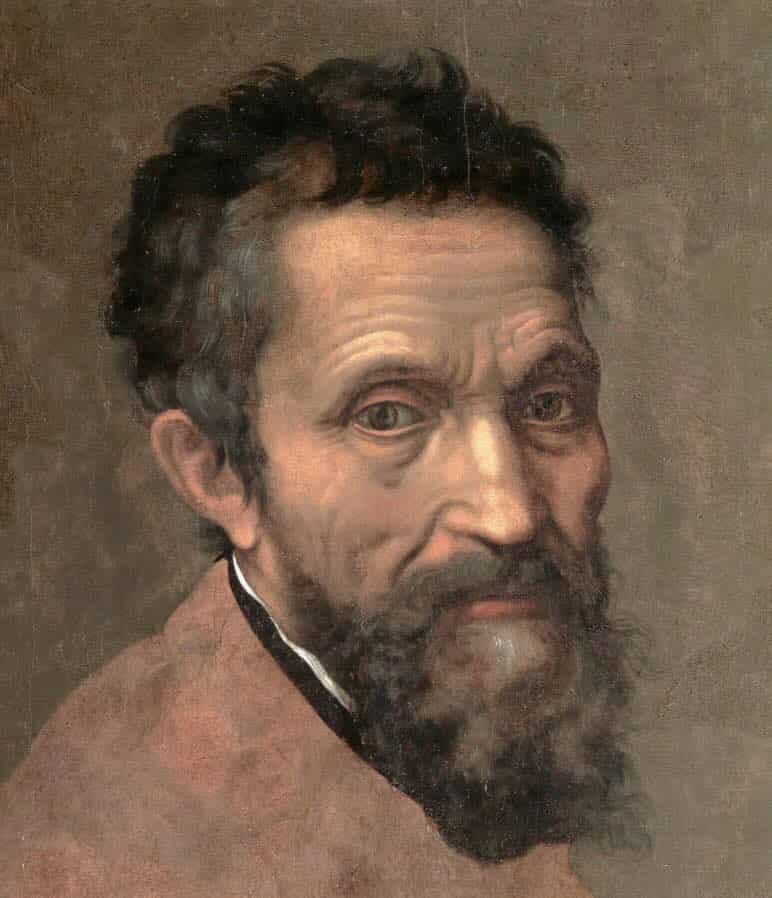
Masterpieces and Techniques
Continuing from Michelangelo’s profound legacy, it’s clear that his art stood the test of time not just because of his incredible skill but also due to the emotional depth and intellectual complexity woven into his creations. Michelangelo was not merely a product of the Renaissance; he significantly defined its artistic direction, setting standards that inspire awe and admiration even today.
One aspect that sets Michelangelo’s artworks apart is his unparalleled mastery over different media. While he considered himself primarily a sculptor, his works span painting, sculpture, and architecture. This versatility is not just in medium but in scale and subjects, from the grandeur of the Sistine Chapel ceiling to the intricate detail of the Pietà. Each piece carries a signature blend of physical precision and emotional depth.
Michelangelo also brilliantly employed contrapposto. This technique, where the figure stands with most of its weight on one foot, creating a slight s-curve in the body, brings dynamic energy and realism to his sculptures. It’s a testament to his deep understanding of human anatomy; each muscle and curve is carved to convey movement and emotion, making the marble seem almost fluid.
Michelangelo’s ability to infuse spirituality into his work also contributes to its timelessness. His religious commissions do not just display biblical narratives; they explore complex theological concepts and human emotions. The Last Judgement, for instance, goes beyond depicting the end of times; it invites viewers to ponder over salvation, redemption, and divine judgment. His work is a dialogue between human and divine, tangible and ethereal.
Innovation is a hallmark of Michelangelo’s career. He frequently pushed boundaries, whether by painting the Sistine Chapel ceiling almost single-handedly or choosing unconventional postures for his sculptures. His David is not just a depiction of the biblical hero but a symbol of the beauty and potential of the human form. Michelangelo’s continuous experimentation and refusal to follow strict norms propelled Renaissance art.
Finally, Michelangelo’s artworks endure because they speak to universal themes of struggle, beauty, faith, and human emotion. They encapsulate the Renaissance man’s quest for knowledge and beauty across all fields of human endeavor. Though deeply rooted in the context of his time, Michelangelo’s works transcend the era to communicate with viewers centuries later, invoking a sense of shared humanity.
In a way, Michelangelo’s art achieved what he once noted about sculpture: the ability to liberate the forms imprisoned in marble. His legacy lies not just in the physical beauty of his works but in their capacity to touch the human spirit, making Michelangelo’s creations timeless masterpieces.
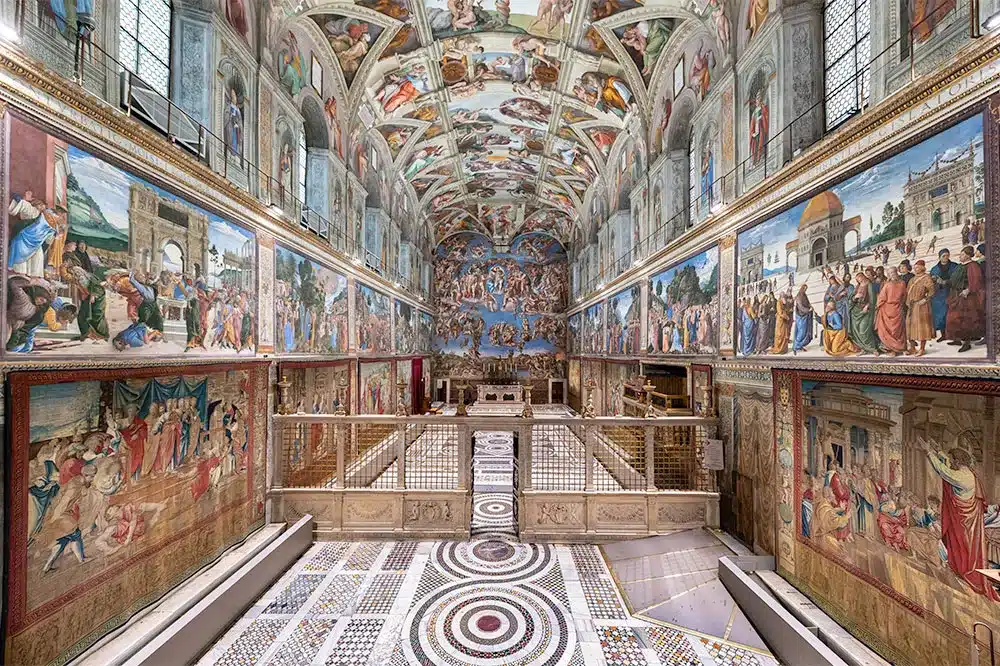
Legacy and Influence
Michelangelo, synonymous with artistic excellence, left a legacy that influenced generations of artists long after he laid down his chisel. His work, spanning sculptures, paintings, and architecture, became a textbook for aspiring artists, a source of inspiration, and a standard of artistic achievement. But how exactly did his genius impact those who came after him? Let’s delve into the ripples Michelangelo created in the art world, shaping its future.
First, Michelangelo’s monumental scale and the profound emotional depth of his figures became a benchmark. From the imposing David to the touching Pietà, his sculptures communicated human emotions with an innovative and deeply moving intensity. This emotional resonance and his unparalleled skill in depicting the human form encouraged artists to explore more dynamic and expressive poses, pushing the boundaries of traditional sculpture and painting.
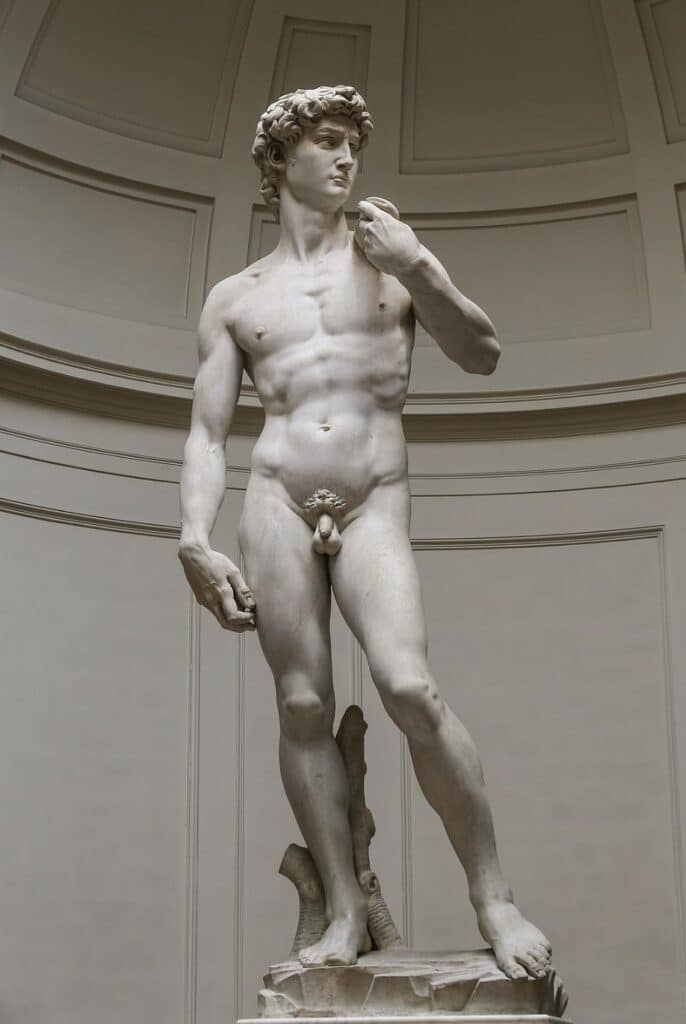
Michelangelo’s work on the Sistine Chapel ceiling broke new ground in several ways, not the least of which was his approach to composition and the human form. By portraying figures from complex angles and in various poses, he demonstrated a revolutionary mastery of anatomy and perspective.
His creation of the Ignudi, or nude male figures, displayed around the central narratives, highlighted his ability to infuse grace and power into the human body. This encouraged later artists to study anatomy with a renewed vigor and to experiment with bold, dynamic compositions in their work.
Moreover, Michelangelo’s innovative use of contrapposto—an ancient Greek sculptural scheme in which the figure stands with most of its weight on one foot so that its shoulders and arms twist off-axis from the hips and legs—gave his sculptures a lifelike presence and sense of potential for motion. This technique became a critical lesson for artists in achieving balance and naturalism in depicting the human figure.
In addition, Michelangelo’s infusion of spirituality into his work, especially evident in his paintings in the Sistine Chapel, added a layer of complexity to his art. He portrayed biblical scenes with a humanized fervor that made the divine accessible. This approach opened new avenues for artists, encouraging them to embrace themes of spirituality and express them through a deeply personal lens, enriching the narrative scope of their work.
Another aspect of Michelangelo’s towering influence was his innovative approach to art. He frequently ventured into uncharted territories, mixing media and techniques, and bringing a sculptor’s sensibility to painting and architecture. This interdisciplinary approach inspired future artists not to limit themselves to a single medium but to explore and integrate diverse artistic languages and techniques into their work.
Finally, the universal themes addressed in Michelangelo’s artwork—such as beauty, struggle, and transcendence—have ensured his work’s timelessness and relevance. These themes spoke not just to his contemporaries but continue to resonate with artists and audiences today. His ability to capture the quintessence of human experience in marble and on canvas laid the groundwork for art that transcends time and place, encouraging artists to explore the depths of human nature in their work.
In sum, Michelangelo’s impact on later generations of artists is profound and multifaceted. His artistic vision, characterized by a bold exploration of the human condition and a relentless pursuit of perfection, set a new standard in art.
By blending technical mastery with emotional depth and spiritual insight, Michelangelo became a central figure of the Renaissance and a timeless beacon for artists seeking to capture the essence of humanity in their work. His legacy is not just in the artworks he left behind but in the spirit of innovation and exploration he imparted to the art world.
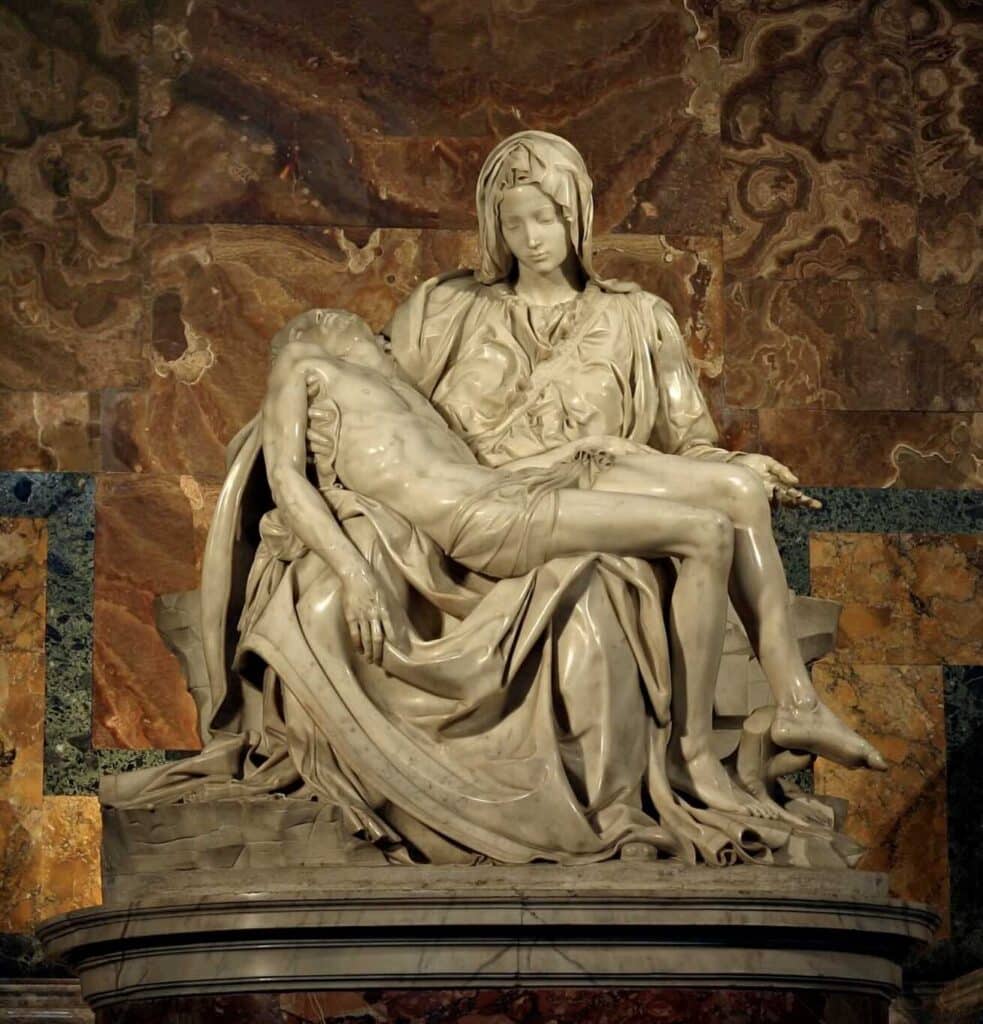
The story of Michelangelo Buonarroti, a master sculptor, painter, and architect, is a testament to the enduring power of creativity and hard work. His monumental contributions have sculpted the face of Renaissance art and left an indelible mark on the collective human spirit.
Michelangelo’s legacy, woven through his masterpieces, continues to inspire and challenge us, urging us to seek beauty and truth in our pursuits. Through his life and work, Michelangelo exemplifies the transformative potential of artistic endeavor, reminding us of art’s ability to connect deeply with the human experience and to elevate our understanding of ourselves and our world.
Anita Louise Art is dedicated to art education, great artists, and inspiring others to find and create their art. We love art that uplifts and inspires. #ArtToMakeYouSmile! #ArtToMakeYouHappy!
If you are interested to see any of my art, you can find out more by clicking here. If you are interested in what inspires me and my paintings, you can discover more by clicking here.
We have a free newsletter and would love you to be part of our community; you can subscribe to the newsletter by clicking here. If you have any questions, I would be happy to talk to you at any time. You can reach me, Anita, by clicking here.
Subscribe to our Anita Louise Art YouTube Channel filled with great videos and information by clicking here.
Related Questions
Did Michelangelo And Leonardo Know Each Other?
Michelangelo and Leonardo da Vinci knew each other but were considered bitter rivals. Leonardo da Vinci and Michelangelo knew each other, but they did like each other. They were both asked to do a commission on the Council Hall of the Palazzo Vecchio and were supposed to work side-by-side; the project was never completed.
By clicking here, you can learn more by reading Did Michelangelo And Leonardo Know Each Other?.
What Was The Focus Of Renaissance Art?
The focus of Renaissance art was on the classics of Greek and Rome, humanist philosophy, and the study of the human figure. Realism was also an essential part of renaissance art. The great artists of the Renaissance also became great anatomists and studied human beings.
By clicking here, you can learn more by reading What Was The Focus Of Renaissance Art?.
Michelangelo’s Sistine Chapel And His Payment
Michelangelo was paid 3200 gold ducats for his work on the ceiling of the Sistine Chapel, which would have been a very lucrative commission. We know that he stopped work on the ceiling for a while due to his not being paid by the Vatican. Michelangelo liked to give the impression that he was a very poor artist, but records have shown that he died an extremely wealthy man.
By clicking here, you can learn more by reading Michelangelo’s Sistine Chapel And His Payment.

